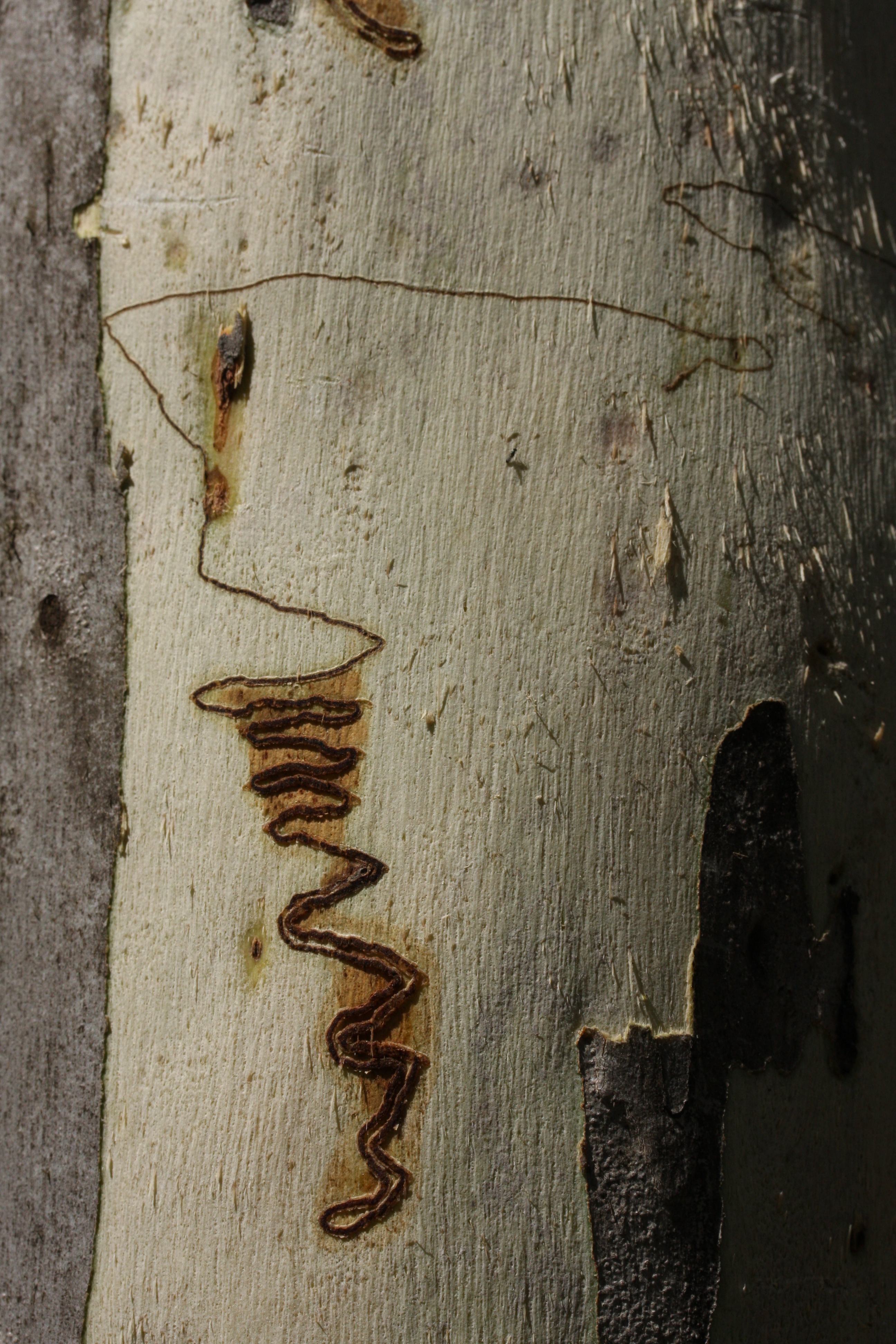Scribbly gum moths, Australia’s original bush artists

If you’ve ever come across a smooth-barked eucalyptus tree decorated in hundreds of swirling, scribbly lines, you may have wondered what or who exactly is responsible for this.
Initially believed to be the work of beetle larvae, it wasn’t until the 1930s that CSIRO entomologist Tom Greaves discovered that it was instead the markings of a unique ecological interaction.
Tom found that the culprit was the larvae of a small moth, which was then sent to London and described as Ogmograptis scribula. However, following this major breakthrough, CSIRO entomologist Marianne Horak tells Australian Geographic that research into the unique animal didn’t progress for almost 70 years.
The mysterious scribbly gum moths
Famous Australian scientist Max Day felt it was a disgrace that we knew nothing about the biology of the scribbly moth, despite that they were considered an Australian bush icon, featuring in the poems of Judith Wright and the books of May Gibbs. And he called on Marianne to help.
“All we knew was that it was a little moth that did it. Max came into my office one day, then in his 90s, and said ‘if I do the biology, will you do the taxonomy?’ And I said yes.”
Max assembled a multidisciplinary team, including a botanist and a molecular biologist, and in 2011 they set out on a journey to unravel the mystery of scribbly gum moths, which culminated in the landmark study they published in the journal of Invertebrate Systematics.

Tiny tunnels
According to Marianne, scribbly gum moths have lived off their eucalypt hosts for millions of years, and like our eucalypts they have a Gondwana pedigree.
The scribbly gum moth mines its way through the growth layer of the bark that produces cork leaving behind the familiar loops, twists and lines on the surface of the eucalypt.
“When the growth layer starts to produce cork to shed the outer bark it produces scar tissue in response to the feeding of the caterpillar, filling the doubled up part of the larval tunnel with highly nutritious, thin-walled cells that are rich food for the caterpillar in its last development stages” Marianne explains.
“We have no idea if it’s a mechanical or chemical cue. We would really like to know how the caterpillars make the tree produce this tissue. But that’s the subject for future research.”

Max and Marianne’s 2012 paper described 11 new species of scribbly gum moth and revealed that each moth species has its own unique style.
The two most common scribbles are zigzag patterns, always doubling back on each other, and sine waves.
Next time, you see a scribble on a eucalypt tree make sure you stand back and appreciate the handy work of Australia’s first bush artists.




